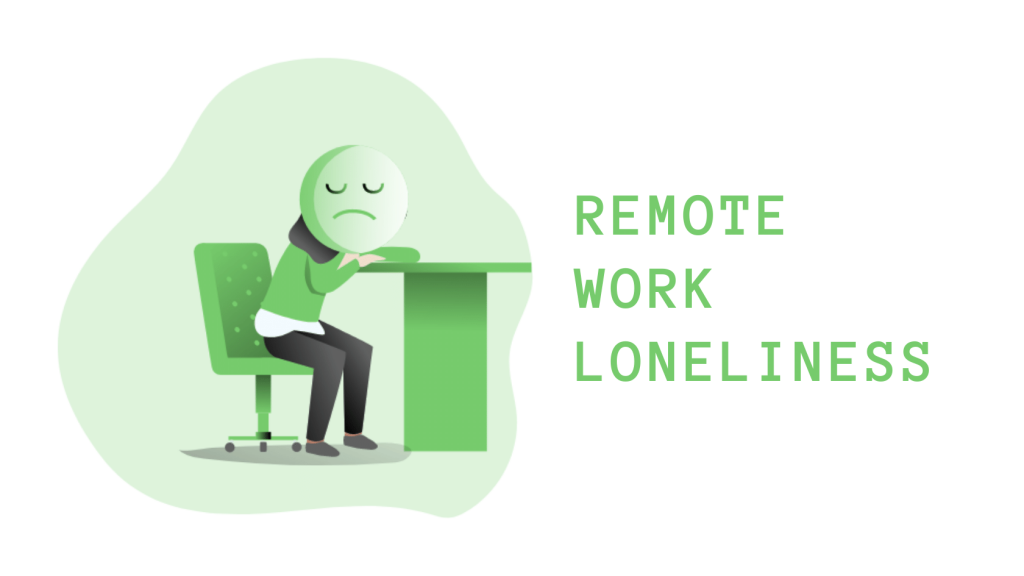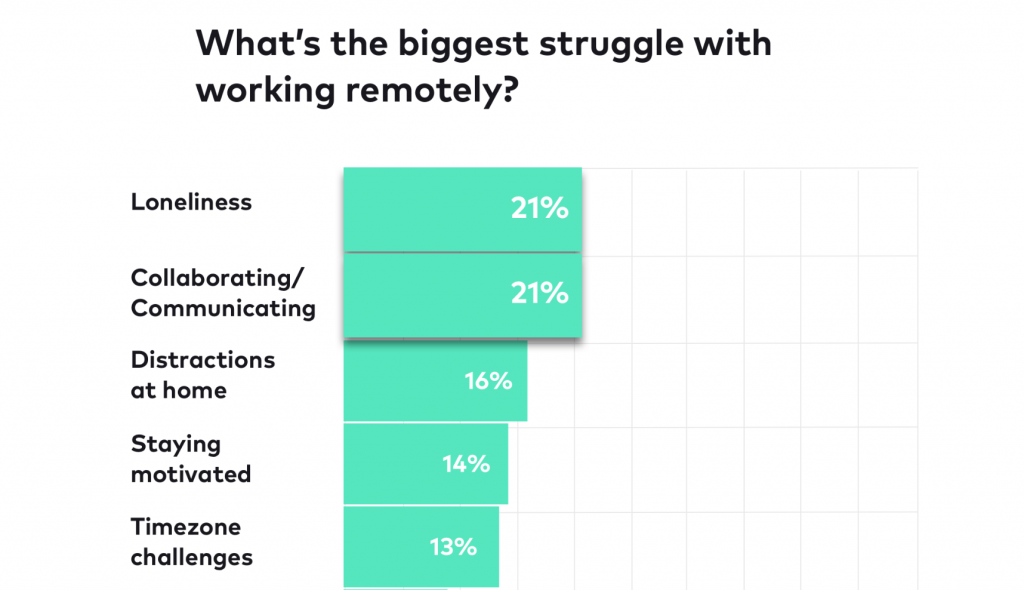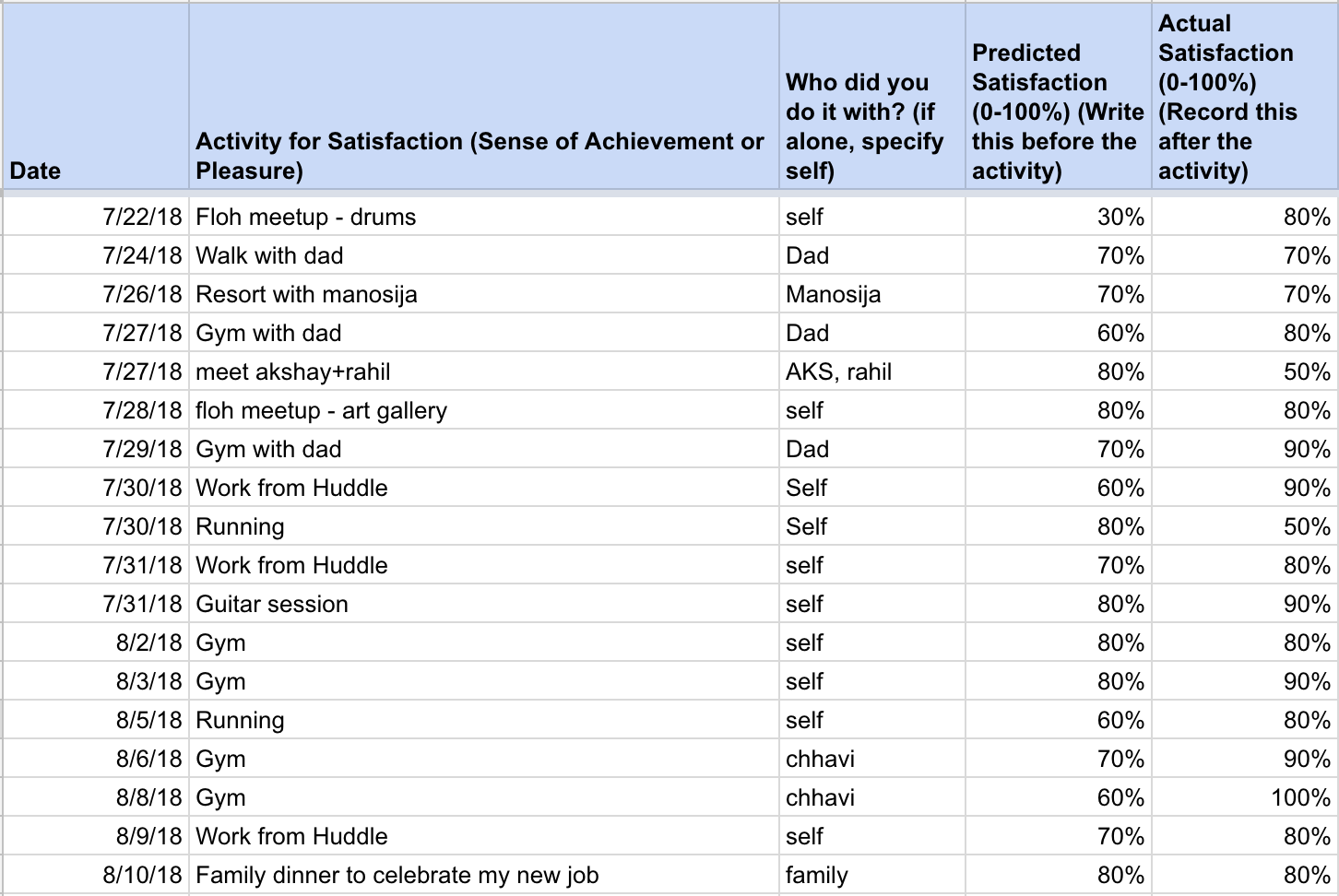
For the entirety of my remote working experience (6+ years now), I’ve been trying to find a solution to tackle loneliness while working remotely. In fact, it’s not just me – hundreds of other individual remote workers and remote teams are trying to find a long-term solution to this problem.
And yet, no-one’s found a permanent solution. In almost all remote work surveys, the no. 1 challenge for remote workers is tackling loneliness. Why are we not able to tackle it? Why is it that all solutions/articles on the internet only give temporary respite from it?

| Taru Bhargava actually wrote this guide on tackling remote work challenges and I would HIGHLY recommend you to read. It’s one of the most comprehensively researched guides on remote worker issues. |
Ditch tactics, build a system
If you’re a remote worker who struggles with loneliness, I’m pretty sure you’ve done your research on how to tackle it. A simple Google search gives you all sorts of solutions to deal with it:
“Join a co-working space.”
“Become more approachable as a person and make the effort to talk to strangers.”
“Join a group class after work.”
“Be an initiator of plans with friends.”
“Become a networking ninja.”
While these are all effective solutions & tactics, they’re usually ineffective over the long term. Speaking from personal experience, you’ll get a boost of motivation one day and start initiating these solutions for a couple of weeks until you slack off again on them – and bam – you’re googling again. 🙂
I believe the primary reason these solutions don’t work is because we’re following tactics. While all these tactics might be effective, they may work for you and may not work for someone else. Or they may work for you for some time and stop working. And that’s the root of the problem.
What we need is a SYSTEM to tackle remote work loneliness. Something that can be followed through day in & out, adapted, refreshed. Something that’s repeatable, effective over long term & stops you from googling that question again.
Enter David Burns’s Pleasure Prediction Exercise
A couple of months back, I read this book called Feeling Good: The New Mood Therapy by David Burns and I came across a wonderful exercise called Pleasure Prediction. The goal of this exercise is to identify activities in your life that bring you most happiness & thereby make you feel less lonely. Then you build your routine and life around these activities.
Step 1: Record your activities & satisfactions levels
To make it easier to follow through, I created this spreadsheet for this exercise (which you can download here). Create a copy of this sheet and fill it for AT LEAST 4 weeks straight (don’t miss a day, otherwise you have to reset your counter).
We have 5 columns in the sheet:
- Date – The day you did the activity.
- Activity for Satisfaction – What activity was it that would bring you a sense of achievement or pleasure or make you feel less lonely?
- Who did you do it with? (if alone, specify self) – Who did you do the activity with? Self or with a friend or group.
- Predicted Satisfaction (0-100%) – What is predicted satisfaction level when doing this activity. Write this before the activity.
- Actual Satisfaction (0-100%) – What is your actual satisfaction level when doing this activity. Record this after the activity.
Here’s how my pleasure prediction spreadsheet looks like:

Step 2: Identify the top activities that bring you satisfaction
Over time as you record these activities, you’ll notice a pattern – some activities bring your more satisfaction than others consistently. Identify those activities and build your life around it.
For example, when I looked at my own list, these were the top activities that got me immense satisfaction regularly:
- Doing unpredictable activities – Activities that usual ‘me’ won’t do. I’m talking about things like going for an art appreciation event or recording my own podcast or making music or reading a book the entire weekend. All of these activities bring in a refreshing element of my every day life.
- Exercising – Always feel great after I work out. It doesn’t matter what kind of work out – boxing, crossfit, yoga, rock-climbing, dance classes – I always felt great after each class.
- Going to my co-working space – Always love it. I feel inspired, upbeat and active whenever I’m working from my co-working space.
- Initiating plans with family/friends – I always felt great every time I made a plan out with family or friends. It could be as simple as going for a 1-2 hour walk with my dad or watching a cricket match together with friends.
Step 3: Structure your life around these activities & reassess regularly
Once you’ve identified these top activities, incorporate them in your every day life & routine. Do more of these activities. You’ll see an immediate change.
After doing this exercise every single day for 4 weeks straights, I actually noticed a difference – more happiness, more excitement, more gratefulness for remote work & ultimately – MUCH lesser remote work loneliness.
My weekly routine constantly changes as new activities are discovered and old ones stop working. It’s a continuous process. That’s the beauty of David Burns’s Pleasure Prediction Exercise. It’s repeatably effective and it’s a simple system to follow.
That’s how remote work loneliness should be treated like. It’s a system, a process, a mental model – that constants needs attention and improvement and to be worked on. If you continue to be self-aware about what activities make you happy, I can promise you this is the closest solution to solving the remote work loneliness problem.
Next steps for you
- Write a list of activities you’re excited about that you feel will keep remote work loneliness away. Here’s a good list to inspire you.
- Try out the steps outlined in the post and build your routine
- Tweet to me at @themadbhandari if this helped 🙂